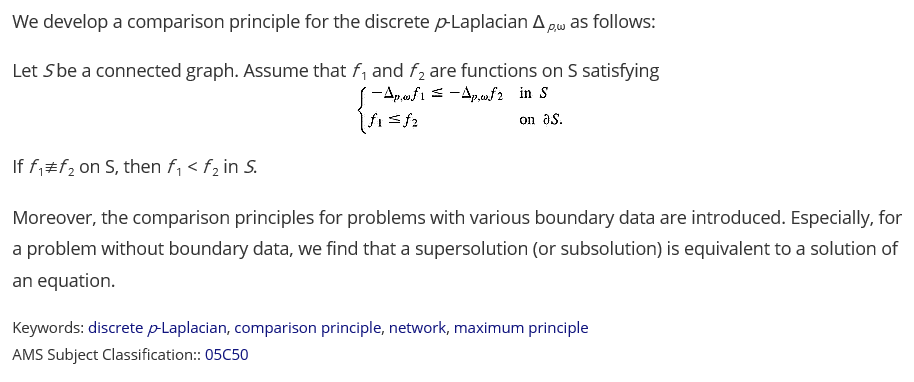논문
Eigenseries solutions to optimal control and controllability problems on hyperbolic PDEs
Hee-Dae Kwon; Jeehyun Lee; Sung-Dae Yang | Discrete and Continuous Dynamical Systems - Series B 13 (2010)
김상혁, 주종천, 황동욱, 이시우 | Journal of Sasang Constitutional Medicine (사상체질의학회지) 22 (2010)
Comparison principles for the p-Laplacian on nonlinear networks
Jong-Ho Kim, S-Y Chung | Journal of Difference Equations and Applications 16 (2010)
A Fingerprint Comparison of Different Prisoner's Dilemma Payoff Matrices
Daniel Ashlock; Eun-Youn Kim; Wendy Ashlock | Proceedings of the 2010 IEEE Conference on Computational Intelligence and Games (2010)
Spatio-temporal chaos in a discrete Turing model
HUNSEOK KANG | International Journal of Bifurcation and Chaos 20 (2010)
Modeling virtual ecosystems that consist of artificial organisms and their environment
이상희 | Korean Journal of Agricultural and Forest Meteorology (한국농림기상학회지) 12 (2010)
A novel approach to characterizing branching network: Application to termite tunnel patterns
Sang-Hee Lee; Nan-Yao Su | Journal of Asia-Pacific Entomology 13 (2010)
First-order transition in the XY model on a fully frustrated simple cubic lattice
V. Thanh Ngo, D. Tien Hoang, and H. T. Diep | Physical Review E 82 (2010)
Simulation Study on the tunnel networks of subterranean termites and the foraging behavior
Sang-Hee Lee; Nan-Yao Su | Journal of Asia-Pacific Entomology 13 (2010)















